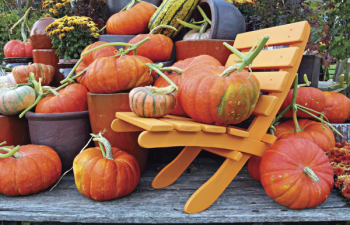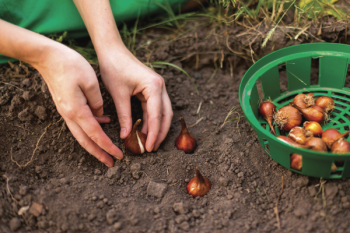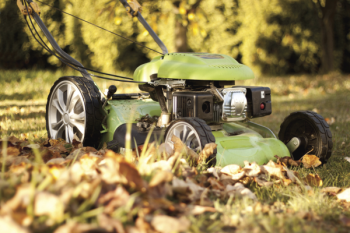
Nature’s Time for Rest
BY RON LAZZER
Putting your children to bed is often a difficult task that comes with alot of resistance, but thankfully putting your garden to bed for the winter isn’t as troublesome. Follow these five tips to help your garden and landscape get the rest they need before spring arrives.
Clean Up. Rake up all the fallen leaves and fruit from your yard and gardens. Leaves make a great place for pests to lay their eggs and protect them over the winter. You don’t want that. Keeping your yard neat will make for fewer pests and diseases in the spring. 
Lawn. Feed your lawn with a fertilizer higher in the first number, for example 25-10-10. This will give your lawn the necessary nutrients for it’s winter rest and help it green-up faster in the spring. Also cut it to a length of about 2-3 inches. Cutting it shorter will cause shallower weaker roots while leaving it too long will cause it to mat and make it more susceptible to winter diseases. If you want to take it a couple of steps further try aerating now instead of in the spring and water it a little before the first hard frost.
Bulbs. Remove non-wintering bulbs by cutting the plant back and removing from the ground. Let it dry out over a couple of days and then place them in a bag with some peat moss and keep them somewhere cool and dark over the winter. In the spring, simply replant them and watch them grow. Some bulbs require planting in the fall. Hyacinth and Daffodil should have already been planted, but there is still time for Tulips. Plant them now so they can go through the winter cycle they require to bloom in the spring. You’ll welcome their vivid colours once the weather warms.
Mulch. Mulch is your friend and your garden bed’s friend too. It’s purpose is not to keep the ground warm, but to keep the ground temperature as even as possible. How do you like it when you go through severe temperature changes? Plants don’t like it either, so if you want them to put on a show for you next year treat them right this fall. First clean up all debris and old mulch to prevent pests and diseases from over wintering. Then pile fresh mulch around the base of plants. 
Roses. By now you should have stopped cutting off the stems. Let them grow seed pods. Most roses can tolerate cold, but they aren’t very good at tolerating temperature fluctuations or drying winds. Pile fresh mulch around the base and if exposed to winter winds create a screen from burlap to protect them from damage. Don’t be afraid to ask your local nursery for more tips on your specific variety. Your roses will thank you in the spring.
These tips cover most of the gardening you’ll need to do to prepare for winter and to help your garden get the rest it needs after a glorious summer. By investing a little time in your garden now it will reward you with a brilliant colour display in the spring and well into next summer.














